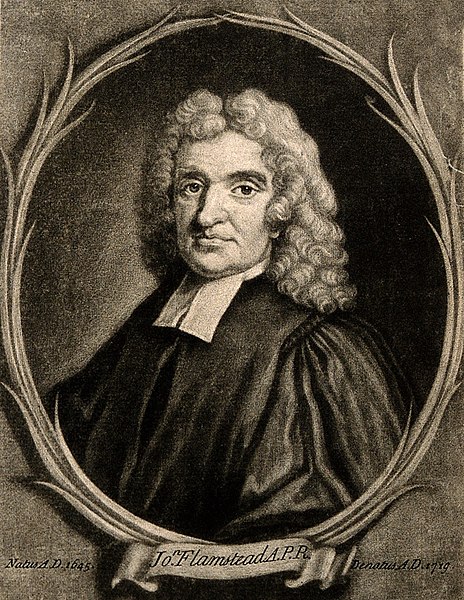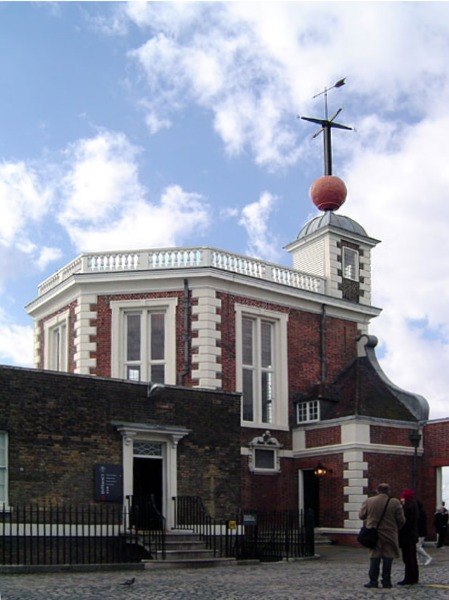Astronomer Royal is a senior post in the Royal Households of the United Kingdom. There are two officers, the senior being the astronomer royal dating from 22 June 1675; the junior is the astronomer royal for Scotland dating from 1834. The Astronomer Royal works to make observations to improve navigation, cartography, instrument design, and applications of geomagnetism. The position was created with the overall goal of discovering a way to determine longitude at sea when out of sight of land.
John Flamsteed, the first astronomer royal, by Thomas Gibson. Royal Society, London.
Image: John Flamsteed 1702
Image: Edmond Halley 072
Image: James Bradley by Thomas Hudson
Royal Observatory, Greenwich
The Royal Observatory, Greenwich is an observatory situated on a hill in Greenwich Park in south east London, overlooking the River Thames to the north. It played a major role in the history of astronomy and navigation, and because the Prime Meridian passed through it, it gave its name to Greenwich Mean Time, the precursor to today's Coordinated Universal Time (UTC). The ROG has the IAU observatory code of 000, the first in the list. ROG, the National Maritime Museum, the Queen's House and the clipper ship Cutty Sark are collectively designated Royal Museums Greenwich.
Royal Observatory, Greenwich. A time ball sits atop the Octagon Room.
The Airy Transit Circle, used for over a century (1851–1953) as the reference point when charting the heavens and determining times, thus earning for it the epithet "the centre of time and space"
The building housing the origin of the Greenwich Prime Meridian, marked by the brass strip in the foreground. The apex of the roof opens up above the white vertical strips (joints in the eaves are visible) to allow telescopic star sightings to be made.
The Shepherd Gate Clock at the gates of the Royal Greenwich Observatory. This clock shows Greenwich Mean Time all year round, ie. it is not set to British Summer Time in the summer.








